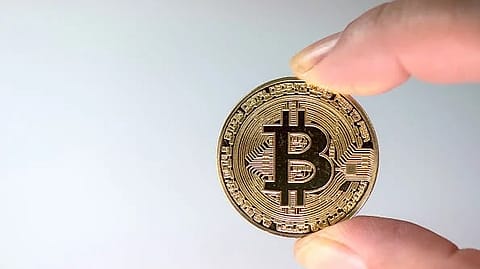India tops global crypto adoption rankings for 3rd year, driven by youth, developers, retail boom
India maintains its top position in global crypto adoption, supported by a young, tech-savvy population and a thriving developer ecosystem. The TRM Labs report highlights a 125% increase in retail transactions, with crypto being used for payments and remittances.

India has maintained its top ranking in global cryptocurrency adoption and stablecoin usage for the third consecutive year in seven months of 2025 (Jan-July), according to a new report from TRM Labs, a blockchain analytics solutions company based in the US. India was followed by countries like the United States (US), Pakistan, the Philippines, and Brazil, which also ranked among the top crypto adopters globally.
The findings show global retail-led adoption accelerated in 2025, as retail transactions rose by more than 125% between January – September 2024, and during the same period in 2025. More people are now using crypto for practical use-cases like payments, remittances and preserving value in volatile economic conditions, says the report.
Countries in the top 10 list include Indonesia, Vietnam, the Republic of Korea, Japan and Ukraine. The TRM report, however, clarifies that India’s position at the top is likely due to its large, young population’s rising interest in digital assets, supported by a crypto-fluent middle class, and a thriving developer ecosystem. Additionally, there is a growing interest in crypto as an asset class among institutional and high-net-worth investors, reinforcing India’s accelerating crypto adoption.
Why is crypto adoption high in India, Pakistan and Bangladesh?
Cryptocurrencies are legal to buy, hold, sell and trade in India under current rules as they come under the Income Tax Act, but they are not considered legal tender, which means you can’t use them as a kind of currency like the rupee.
The rising level of crypto adoption in India, along with Pakistan and Bangladesh, has pushed South Asia to rank among the fastest-growing regions for crypto adoption. South Asia recorded an 80% increase on a year-on-year basis, reaching $300 million in transaction volume.
“Looking at India, which ranks 1 for overall adoption, alongside the other two countries in the top 20, — Pakistan at #3 and Bangladesh at #14 — helps us understand the diverse set of motivations, market structures, and regulatory approaches shaping adoption in the region,” says the report.
Recommended Stories
In Pakistan, soaring grassroots adoption has been further buoyed by key policy moves. In March 2025, the Pakistani government established the Pakistan Crypto Council to develop its blockchain and crypto ecosystem, and also announced plans to establish a dedicated crypto regulator, the Pakistan Virtual Assets Regulatory Authority (PVARA).
Although crypto remains illegal in Bangladesh, adoption continues through underground channels. Since 2014, Bangladesh Bank — the country’s central bank — has issued warnings about crypto use, citing potential violations of the Foreign Exchange Regulation Act. As of 2025, no platforms are licensed to operate legally in the country. However, ongoing capital controls and limited access to foreign exchange have made crypto an attractive option for individuals seeking alternatives to traditional financial systems.
Why does the US remain the largest crypto market globally?
The US, which ranks second in crypto and stablecoin adoption, has seen crypto transaction volume rise roughly 50%, compared with the same period in 2024, to over $1 trillion, the data shows. “This cements the US’s position as the largest crypto market globally in absolute terms (measured by transaction volume), building on the roughly 50% YoY, and highlighting that this growth is part of a sustained, multi-year trend.”
This momentum has unfolded alongside a shifting political and regulatory environment in the US. President Donald Trump’s campaign was the first from a major US party to accept donations in cryptocurrency. TRM analysis shows that there was a 30% increase in US web traffic to VASPs in the six months following the US election compared with the preceding period. Since taking office, President Trump has pledged to make the US “the crypto capital of the world.” Early actions followed, including the GENIUS Act, the 180-Day Digital Assets Report, the Clarity Act, and the launching of the Crypto Task Force to guide oversight.
Regulation has also accelerated in 2025, with the US passing the GENIUS Act, Hong Kong passing its Stablecoin Bill, and the European Union’s Markets in Crypto Assets Regulation (MiCA) coming into effect.
Why are stablecoins getting popular in the crypto space?
Stablecoins are playing an expanding role in global crypto adoption. TRM analysis shows that stablecoins accounted for 30% of crypto transaction volume between January and July 2025. By pegging their price to a reserve asset such as fiat currency or commodities, stablecoins offer consistency amid the unpredictability of local markets in developing economies.
According to TRM analysis, more than 90% of fiat-backed stablecoins are pegged to the US dollar, with Tether (USDT) and Circle (USDC) accounting for 93% of the total stablecoin market capitalisation. As of August 2025, stablecoins reached their highest-ever annual transaction volume — rising 83% between July 2024 and July 2025, and reaching over $4 trillion in transaction volume between January 2025 and July 2025. Over the same period, leading stablecoins increased their share of the crypto market by 52%.
Although TRM assesses that 99% of stablecoin activity is licit, in the first quarter of 2025, stablecoin transaction volume accounted for 60% of illicit activity. This likely reflects the same underlying drivers that have made stablecoins attractive for licit activity, such as low transaction costs, speed, and broad availability on open blockchains like TRON and Ethereum.